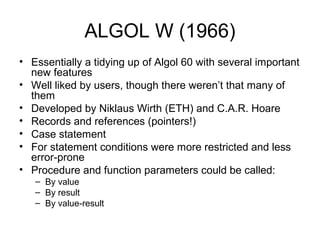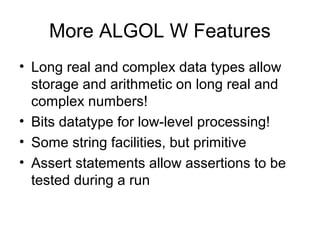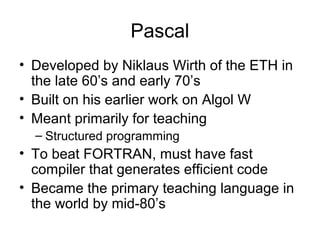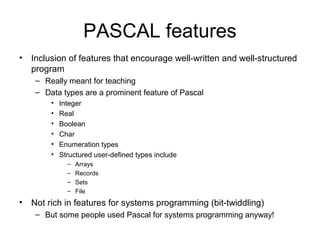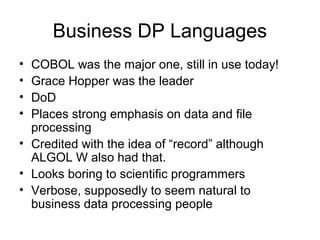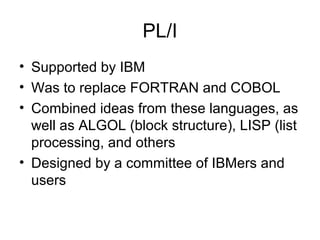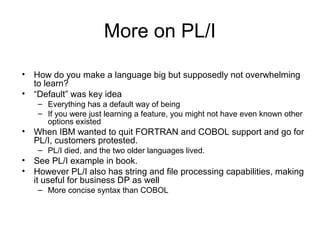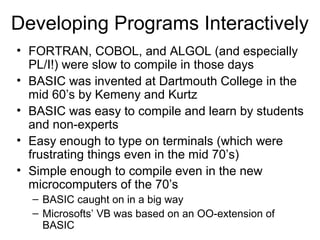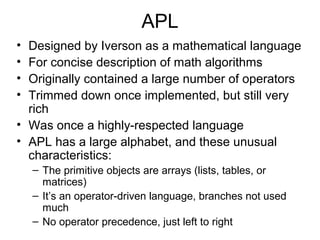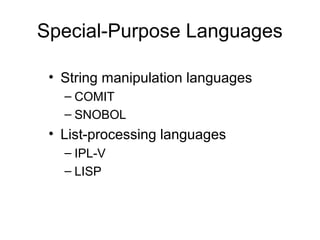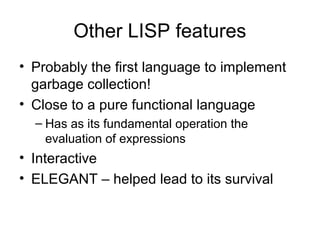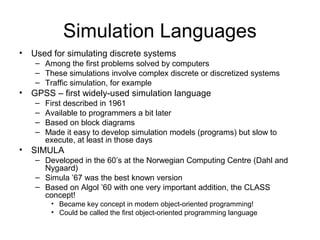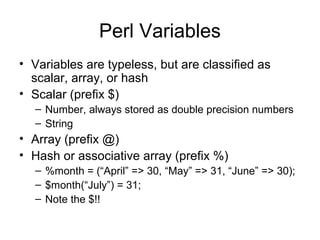This document provides a history of computer programming languages from early machines with primitive instruction codes through modern scripting languages. It discusses early languages like FORTRAN and ALGOL which introduced important concepts like structured programming. It also summarizes general purpose languages like PL/I, business languages like COBOL, interactive languages like BASIC, special purpose languages like LISP and SIMULA, and scripting languages like Perl.
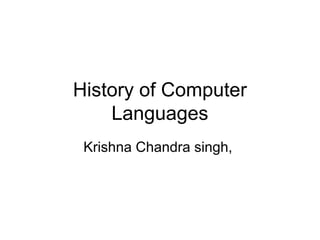
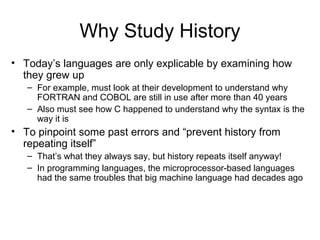
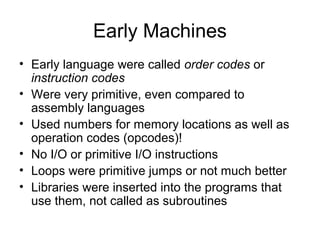
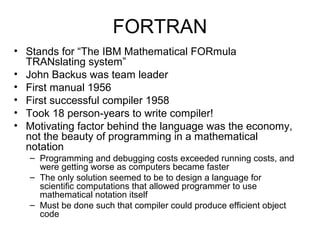
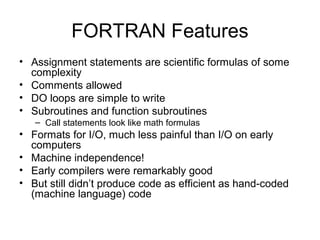
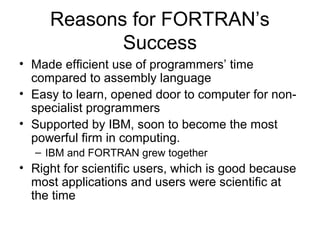

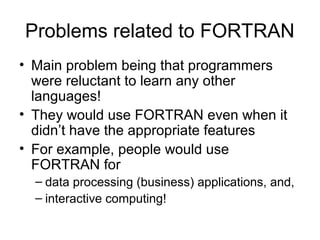
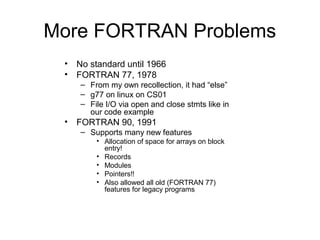
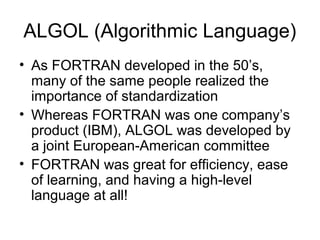
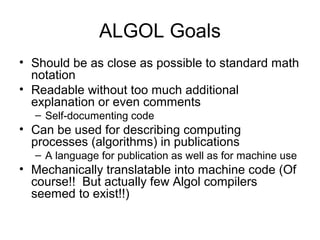

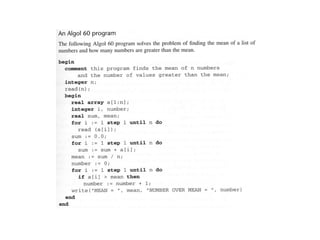
![ALGOL Concepts
• Language definition
– BNF was used to define the syntax for the first time
– This concept led to syntax-directed compilers
• Structured
– Was the original block-structured language!
– Variables weren’t visible outside the block in which they were declared
• Arrays can have variable bounds at compile time
– Bounds must be fixed when entering block in which the array was
declared at run time
– Can even have bounds like a[m:n, p:q], or complicated expressions for
the bounds
• Contained several structured control statements
– if-else for, while (nesting OK),
– Later some of these were exported to FORTRAN
• Recursion introduced for the first time!
– Then thought to be useless “academic” concept
– Couldn’t figure out how to compile them efficiently](https://image.slidesharecdn.com/computerhistorykrishna-150923022923-lva1-app6892/85/Computer-history-krishna-14-320.jpg)

